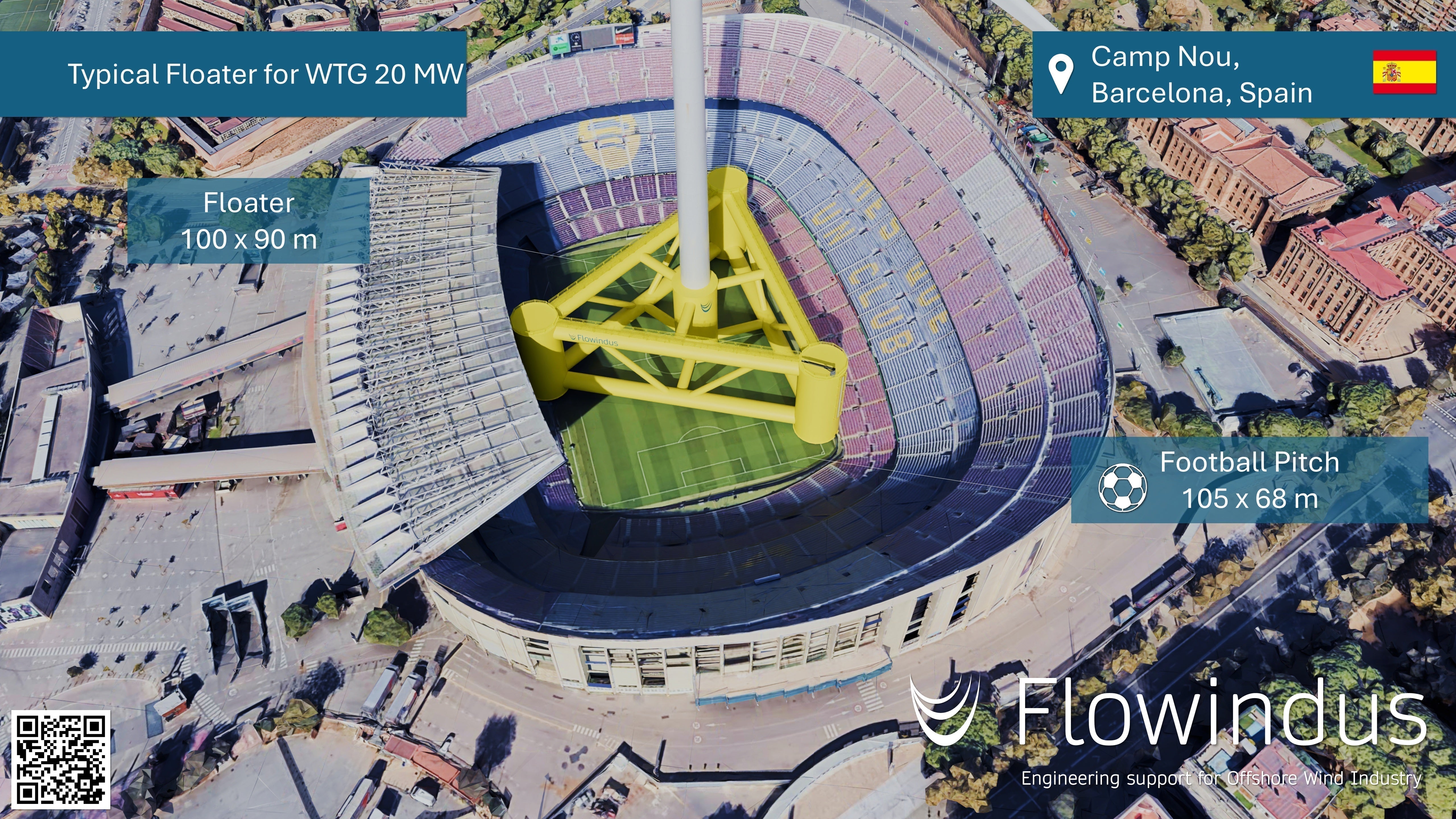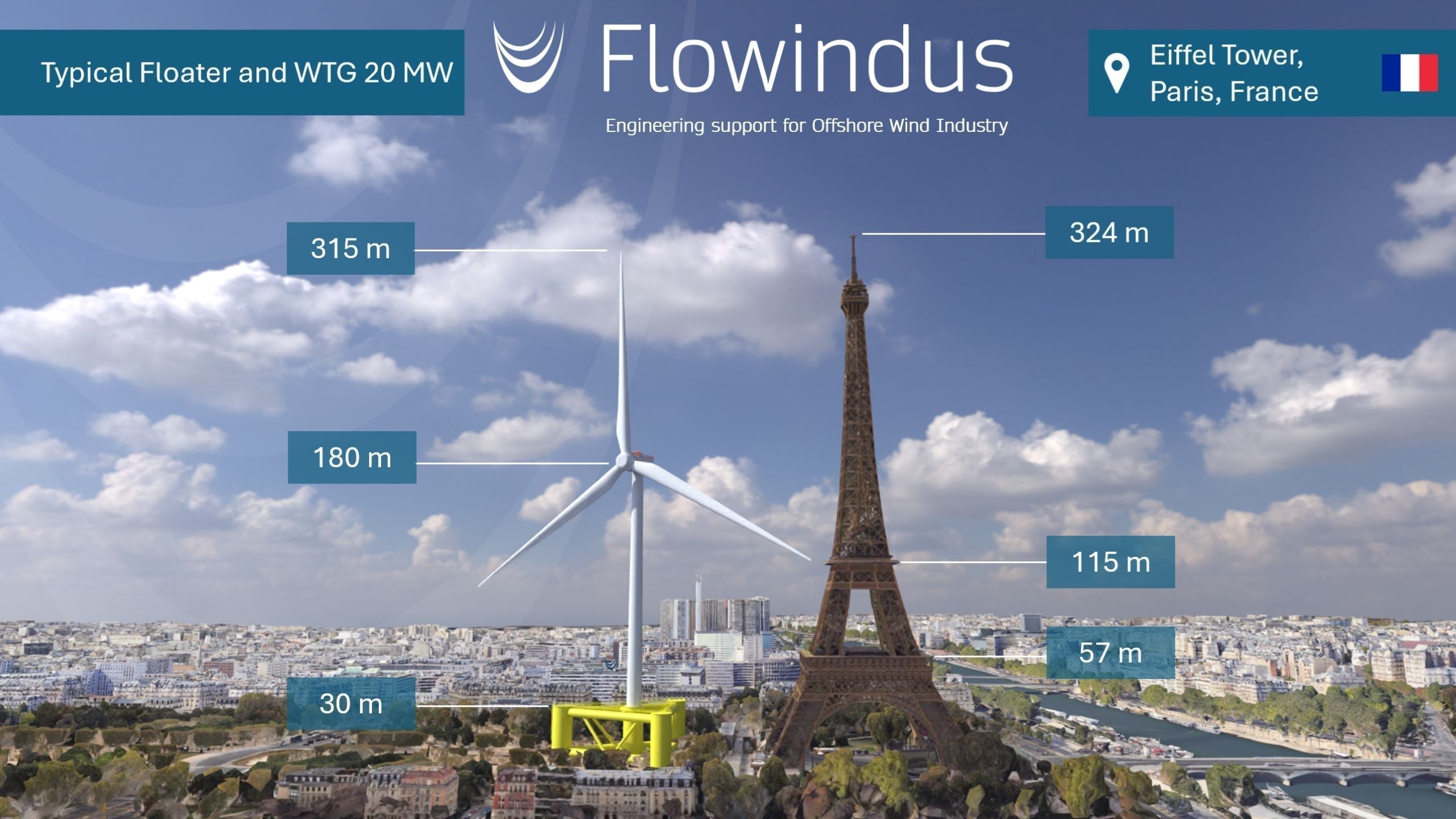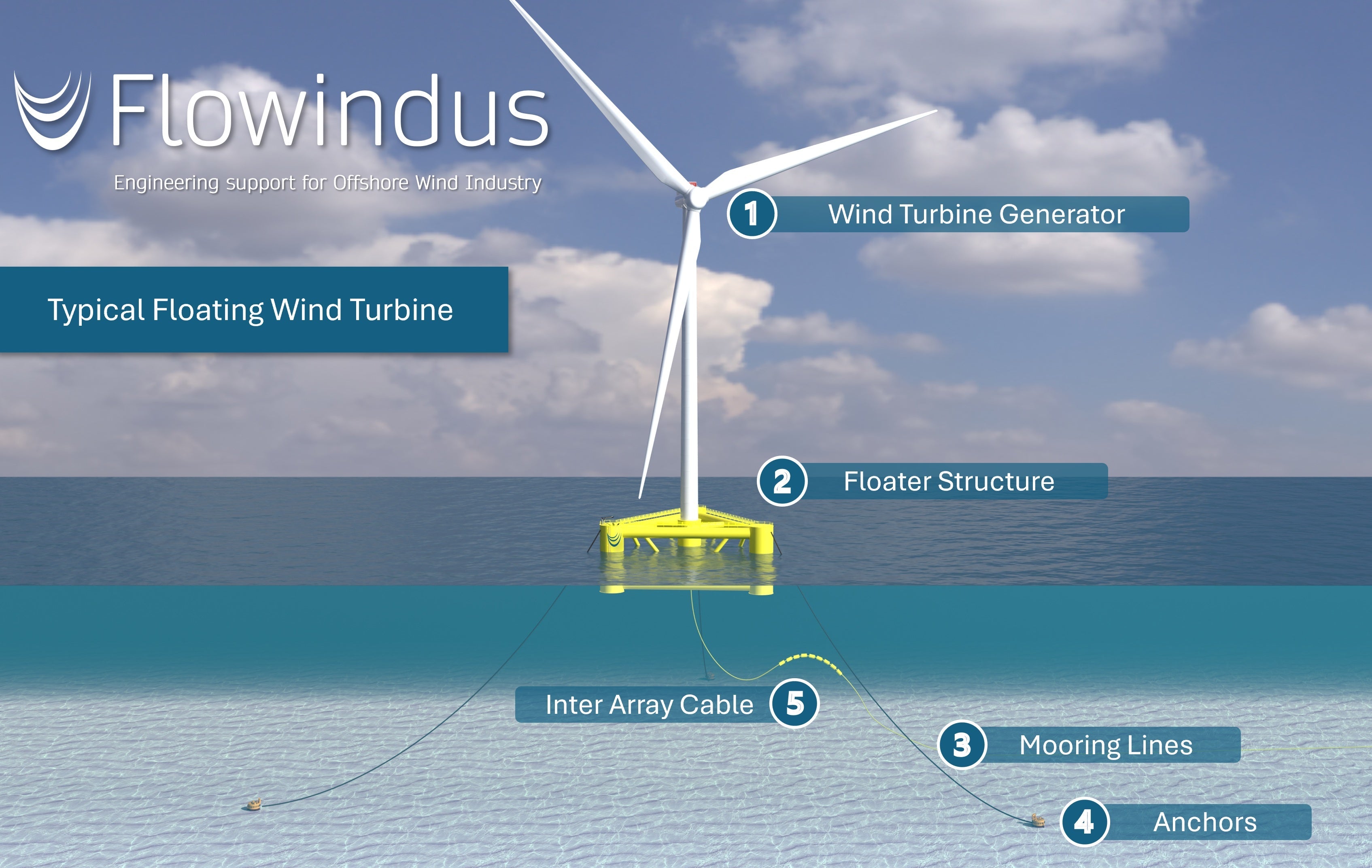Imagine comparing a floating wind turbine 20MW to our favorite sports stadium.
Floating offshore wind is rapidly advancing, with turbines reaching unprecedented sizes. The market is currently considering 20MW wind turbines for upcoming commercial projects, requiring equally large floating foundations.
Unlike bottom-fixed wind turbines, these floaters must support the full weight of the turbine while maintaining stability in open waters, making their size comparable to a football pitch.
The width of a floater typically ranges from 90 to 110 meters (for semi-submersible designs) for a 20MW turbine. The height of a typical floater is around 30 meters, for a final estimated weight range between 3,500 ton to 6,000 ton (for the steel concepts).
There are various floater technologies in development with different shapes, sizes, and materials (steel or concrete). Overall, floaters size and weight can vary significantly between technologies.
To demonstrate the scale of these structures, a generic steel floater has been modeled in some well-known sport stadiums.

➡️ Download the 3D renderings in 4K HQ ⬅️
We also created a Virtual Reality scene with a 360° immersive view inside the stadium to represent the same scene from a different point of view.
Have a look of the Floating Wind Turbine inside the famous stadium of FC Barcelona, the Camp Nou ! ⬇️🔭
💡Note that these renderings are informative only.
Flowindus does not endorse any specific floater design and currently has no commercial partnership with any sports team (yet!).
The modeled floater design is a generic steel tri-columns semi-submersible, with dimensions that represent an average of the market technologies for a 20MW WTG, considering as a base case for the future windfarms.
The sole purpose of these renderings is to provide a visual understanding of the size range of floaters for future commercial projects and to highlight the industrial challenges in meeting market expectations.






What exactly is a floating wind turbine?
What is the height of a typical floating wind turbine 20MW?